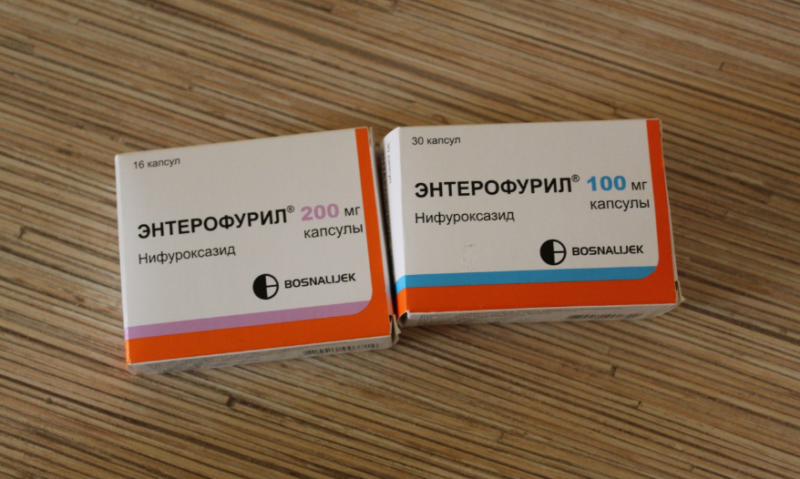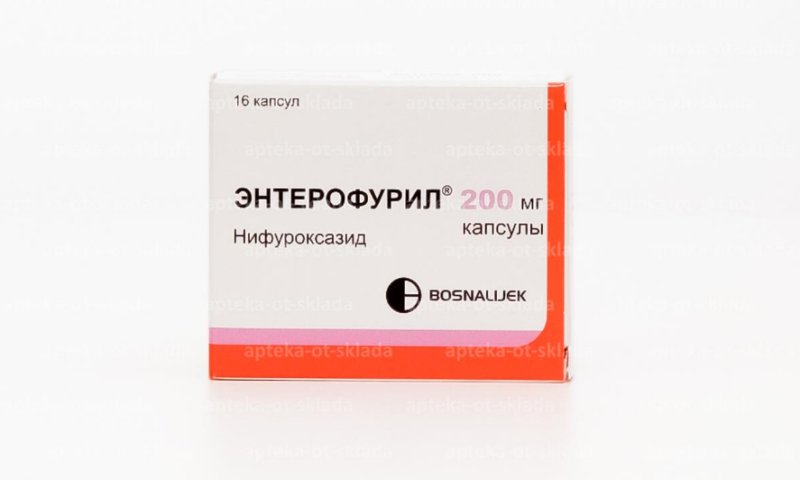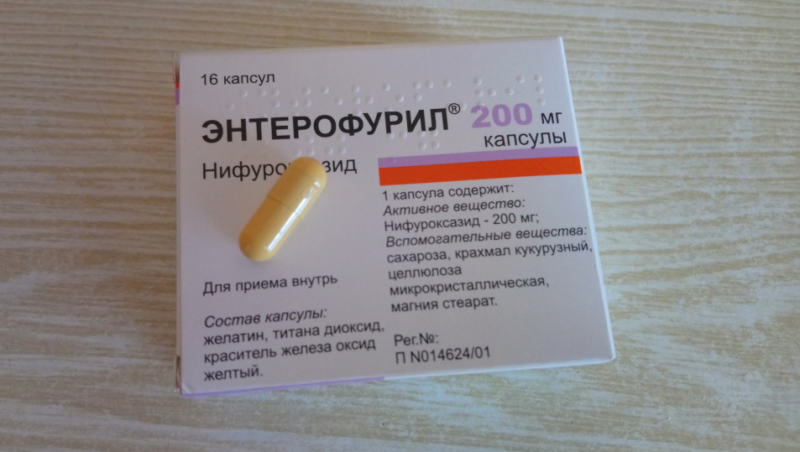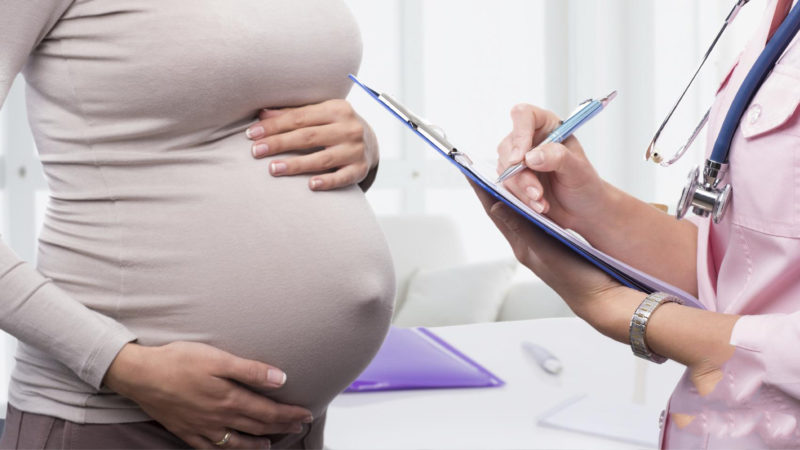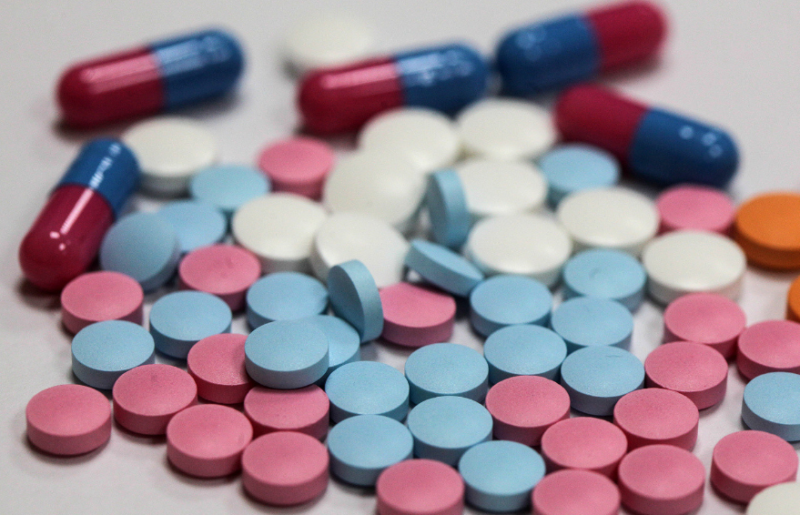Enterofuril first appeared in Europe about fifty years ago. Periodic research has opened up its new possibilities. From the article you will learn how Enterofuril helps and how it is used today.
Material Content:
- 1 Composition and release forms
- 2 How Enterofuril helps children and adults
- 3 Instructions for use of capsules and suspensions
- 4 During pregnancy and lactation
- 5 Combination with alcohol
- 6 Features of admission in children
- 7 Drug interaction
- 8 Contraindications, side effects and overdose
- 9 Analogues of the drug
Composition and release forms
The basis of the discussed pharmaceuticals is the nifuroxazide antibiotic. The manufacturer supplies the medicine to the pharmacy shelves in capsules and in suspension. The first dosage form contains 0.1 or 0.2 g of active substance, the second 200 mg / 5 ml. In addition to it, the composition of the drug contains other excipients responsible for the stability of its dosage form, taste and preservation.
How Enterofuril helps children and adults
According to the official annotation, the indication for the use of the antibiotic in question is diarrhea, which is caused by:
- pathogenic organisms sensitive to the effects of pharmaceuticals;
- diseases of the large intestine mucosa;
- medicines (e.g. antibiotics);
- uncertain reasons.
Enterofuril can only be prescribed by a qualified specialist.
Instructions for use of capsules and suspensions
Each dosage form of the drug has its own characteristics of admission for adults and young patients.
- Adults The suspension is taken orally. The daily dose is 20 ml. It must be consumed 4 times. Before this, the container must be shaken. The norm of the tablet form is 800 mg per day.This dose also needs to be divided into four doses. That is, at a time you can drink 2 tablets of Enterofuril 100 mg or one capsule of 200 mg.
- Children. The maximum dose for babies is 0.6 - 0.8 mg in 3 to 4 doses.
Enterofuril is suitable for the treatment of intestinal infections only in children who have reached the age of three.
Suspension in case of poisoning can be given to crumbs from the age of one month.
For children, Enterofuril is prescribed for use according to the following scheme:
- up to six months - 2.5 ml three times;
- after seven months - 2.5 ml 4 times;
- from three to seven years - 15 ml in three doses (at this age, you can give tablets of the drug, the dose is calculated on the basis of 200 mg / 5 ml).
The interval between doses is eight hours.
The duration of treatment is determined only by the doctor. The maximum duration of therapy for all patients is seven days.
Often, patients ask when it is best to take the medicine: after or before meals. The attached annotation says that this factor does not affect the effectiveness of the medication, so the latter can be taken at any convenient time.
During pregnancy and lactation
There is no evidence of the effect of Enterofuril on the fetus. Therefore, it is not recommended to prescribe a medication for women bearing a child.
During lactation, the medicine can be taken, but only for short-term therapy.
Combination with alcohol
Treatment with Enterofuril of diseases caused by rotaviruses or other pathologies categorically excludes the use of alcohol-containing drinks. The medication negatively affects the breakdown of ethanol, which provokes alcohol intoxication.
The latter is manifested:
- high fever;
- skin redness;
- gagging;
- difficulty breathing;
- increased diarrhea;
- heart palpitations;
- bouts of baseless fear.
Features of admission in children
If vomiting is observed against the background of diarrhea in the baby, before using Enterofuril you need to make sure that the digestive upset is not caused by viruses or helminths.
The medication in question is designed to treat diarrhea caused by bacteria. A characteristic symptom of such diseases is high body temperature.
Often, in addition to Enterofuril, babies are prescribed Smecta. These drugs have different effects: the first destroys intestinal infection, the second - envelops the gastrointestinal mucosa, which positively affects its barrier function and increases its resistance to pathogenic microorganisms.
In the 2000s, scientists tested the safety of the drug for children and established new age standards that are relevant in our time.
Drug interaction
Since Enterofuril has no systemic absorption, the possibility of its interaction with other medicines is very small.
Despite this, it is forbidden to combine with drugs:
- containing alcohol;
- provoking an antabuse reaction.
Contraindications, side effects and overdose
This antidiarrheal drug can not be prescribed to people suffering from high sensitivity to nifuroxazide and its other components.
Enterofuril suspension is prohibited for children up to a month. Tablets can be given to babies who have reached the age of three.
Like any medicine, this antimicrobial drug can cause certain negative reactions in the patient.
Their list is presented:
- abdominal pains;
- bouts of nausea;
- increased diarrhea.
The effects are temporary and do not require therapy, dosage review or drug withdrawal.
It is extremely rare that a medication is accompanied by an allergy, namely:
- puffiness;
- Quincke's edema;
- urticaria;
- anaphylactic shock.
In such a situation, treatment with Enterofuril is discontinued.
There is no information about an overdose of medication. This is because it is not absorbed from the intestine, so its particles are not in the systemic circulation.
If, after taking an overestimated dose, the patient has an intoxication of the body, he urgently needs to rinse the stomach and conduct symptomatic therapy.
Analogues of the drug
The most effective substitutes for Enterofuril are Entoban and the French medicine Intetrix.
Their main disadvantage is the presence of age restrictions and the inability to assign small children.
Intetrix is available in one form, does not have a special children's form and is contraindicated in children. Entoban is presented in the form of syrup and capsules. Capsules can be taken only by adults, syrup - by kids over four years old.
Also, Enterofuril can be replaced by Enterol and Furazolid.
Only a doctor should select analogues for a patient of any age. The use of Enterofuril for self-medication is prohibited.


